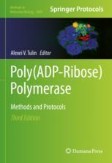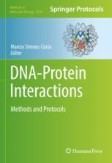Search
Search Results
-
Immunoprecipitation
Immunoprecipitation (IP) is an immunological technique in which antibodies are used to pull down a target protein from a mixed solution. This happens...
-
Protein–Protein Interactions: Co-immunoprecipitation
Proteins often do not function as single substances but rather as team players in a dynamic network. Growing evidences show that protein–protein...
-
Assessing Peroxisomal Protein Interaction by Immunoprecipitation
Organelles physically interact with each other via protein tethering complexes that bridge the opposing membranes. Organelle membrane contacts are...
-
Immunoprecipitation Methods to Isolate Messenger Ribonucleoprotein Complexes (mRNP)
Throughout their life cycle, messenger RNAs (mRNAs) associate with proteins to form ribonucleoproteins (mRNPs). Each mRNA is part of multiple...
-
Co-immunoprecipitation Assays
Co-immunoprecipitation is a well-established technique for determining whether two proteins interact. It is based on the principle that by pulling...
-
Chromatin Immunoprecipitation Experiments from Drosophila Ovaries
Chromatin is composed of DNA and its associated proteins, and has an essential role in all cellular processes, including those taking place during...
-
Chromatin Immunoprecipitation Sequencing (ChIP-seq) for Detecting Histone Modifications and Modifiers
Chromatin immunoprecipitation followed by high-throughput sequencing (ChIP-seq) is the most widely used method for analyzing genome-wide DNA–protein...
-
Immunoprecipitation Using Mono-ADP-Ribosylation-Specific Antibodies
Immunoprecipitation is an essential methodology for enriching and purifying targeted proteins and peptides for in-depth analysis by any number of...
-
Chromatin Immunoprecipitation to Investigate H2A.Z Dynamics in Response to Environmental Changes
DNA methylation and posttranslational modifications of histones instruct gene expression in eukaryotes. Besides canonical histones, histone variants...
-
Native RNA Immunoprecipitation (RIP) for Precise Detection and Quantification of Protein-Interacting RNA
Proteins with either RNA or DNA-binding motifs were shown to bind RNA. Immunoprecipitation of such proteins using antibodies and identification of...
-
Immunoprecipitation of Cullin–Ring Ligases (CRLs) in Arabidopsis thaliana Seedlings
CRL (Cullin–Ring ubiquitin ligases) are the major class of plant E3 ubiquitin ligases. Immunoprecipitation-based methods are useful techniques for...
-
Chromatin Immunoprecipitation and Circadian Rhythms
Organisms exhibit daily changes of physiology and behavior to exert homeostatic adaptations to day-night cycles. The cyclic fluctuation also takes...
-
A low-input high resolution sequential chromatin immunoprecipitation method captures genome-wide dynamics of bivalent chromatin
BackgroundBivalent chromatin is an exemplar of epigenetic plasticity. This co-occurrence of active-associated H3K4me3 and inactive-associated...

-
Chromatin Immunoprecipitation on Fixed Tissues and Cell Lines
Chromatin immunoprecipitation (ChIP) has been used over three decades to characterize protein–DNA interactions in cells and tissues. The samples are...
-
Absolute quantitation of human wild-type DNAI1 protein in lung tissue using a nanoLC-PRM-MS-based targeted proteomics approach coupled with immunoprecipitation
BackgroundDynein axonemal intermediate chain 1 protein (DNAI1) plays an essential role in cilia structure and function, while its mutations lead to...

-
Chromatin Immunoprecipitation (ChIP) of Heat Shock Protein 90 (Hsp90)
Chromatin immunoprecipitation followed by sequencing (ChIP-seq) is a widely used technique for genome-wide...
-
Map** protein–RNA binding in plants with individual-nucleotide-resolution UV cross-linking and immunoprecipitation (plant iCLIP2)
Despite crucial roles of RNA-binding proteins (RBPs) in plant physiology and development, methods for determining their transcriptome-wide binding...

-
Yeast Mitoribosome Purification and Analyses by Sucrose Density Centrifugation and Immunoprecipitation
Mitochondrial protein biosynthesis is maintained by an interplay between the mitochondrial ribosome (mitoribosome) and a large set of protein...
-
Detecting antibody reactivities in Phage ImmunoPrecipitation Sequencing data
Phage ImmunoPrecipitation Sequencing (PhIP-Seq) is a recently developed technology to assess antibody reactivity, quantifying antibody binding...

-
Immunoprecipitation and Western Blot Analysis of AP-1 Clathrin-Coated Vesicles
The function and integrity of epithelial cells depends on the polarized localization of transmembrane proteins at either apical or basolateral plasma...
